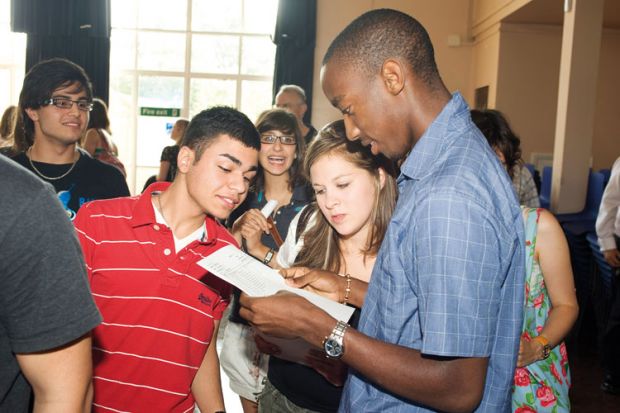A record number of students were placed in UK universities and colleges as A-level results were released, with acceptances up 2.9 per cent year-on-year.
Ucas said that 423,880 applicants had secured a place as of midnight on 18 August, an increase of 11,800 on the same point in 2015.
This included 201,230 UK-domiciled 18-year-olds, up 2 per cent year-on-year despite a fall in the population. As a result, young people were 4 per cent more likely to have been placed in higher education than last year, Ucas said.
The admissions service also reported a rise in acceptances from older age groups, with the number of those winning a place who are aged 25 and above increasing by 8 per cent.
And the number of non-UK European Union students enrolling in British universities rose by to 26,830, a 10.8 per cent increase year-on-year, with no immediate sign of the UK’s vote to leave the EU hitting recruitment.
Student resources
How to survive A-level Results Day
How to deal with stress over exam results
Video: 10 common Exam Results Day questions – answered
This year’s results show the first signs of a narrowing of the gender gap in university admissions, with a 2.5 per cent increase in the number of 18-year-old UK-domiciled men placed, compared with a 1.6 per cent increase in the number of women. But the gap remains wide, with 27,430 more females winning places than males.
More selective institutions accounted for the bulk of the expansion on results day, with higher and medium tariff institutions reporting year-on-year growth of 3.4 per cent and 4.2 per cent, respectively. Lower tariff institutions reported growth of only 1.2 per cent.
There was a very slight narrowing of the gap in entry rates between the most and least advantaged students, with UK-domiciled 18-year-olds from the least advantaged backgrounds being 6.8 per cent more likely to win a place compared with last year. But the most advantaged students remain two and a half times more likely to secure a place compared with their least advantaged peers.
Mary Curnock Cook, the chief executive of Ucas, said that it was a “big day” for hundreds of thousands of young people who had chosen to enter higher education.
“I’m particularly pleased to see the first small signs of improvement for young men, although they are still too far behind,” she added.
Top A-level grades were down for the fifth year in a row, with 25.8 per cent of all entries receiving an A or A* grade, compared with 25.9 per cent last year. Overall, 98.1 per cent of entries received a pass grade of A* to E, the same proportion as in 2015.
Female students continued to get more A or A* grades than their male counterparts, but their lead shrunk to just 0.3 percentage points, the lowest level for at least a decade.
Register to continue
Why register?
- Registration is free and only takes a moment
- Once registered, you can read 3 articles a month
- Sign up for our newsletter
Subscribe
Or subscribe for unlimited access to:
- Unlimited access to news, views, insights & reviews
- Digital editions
- Digital access to THE’s university and college rankings analysis
Already registered or a current subscriber?








